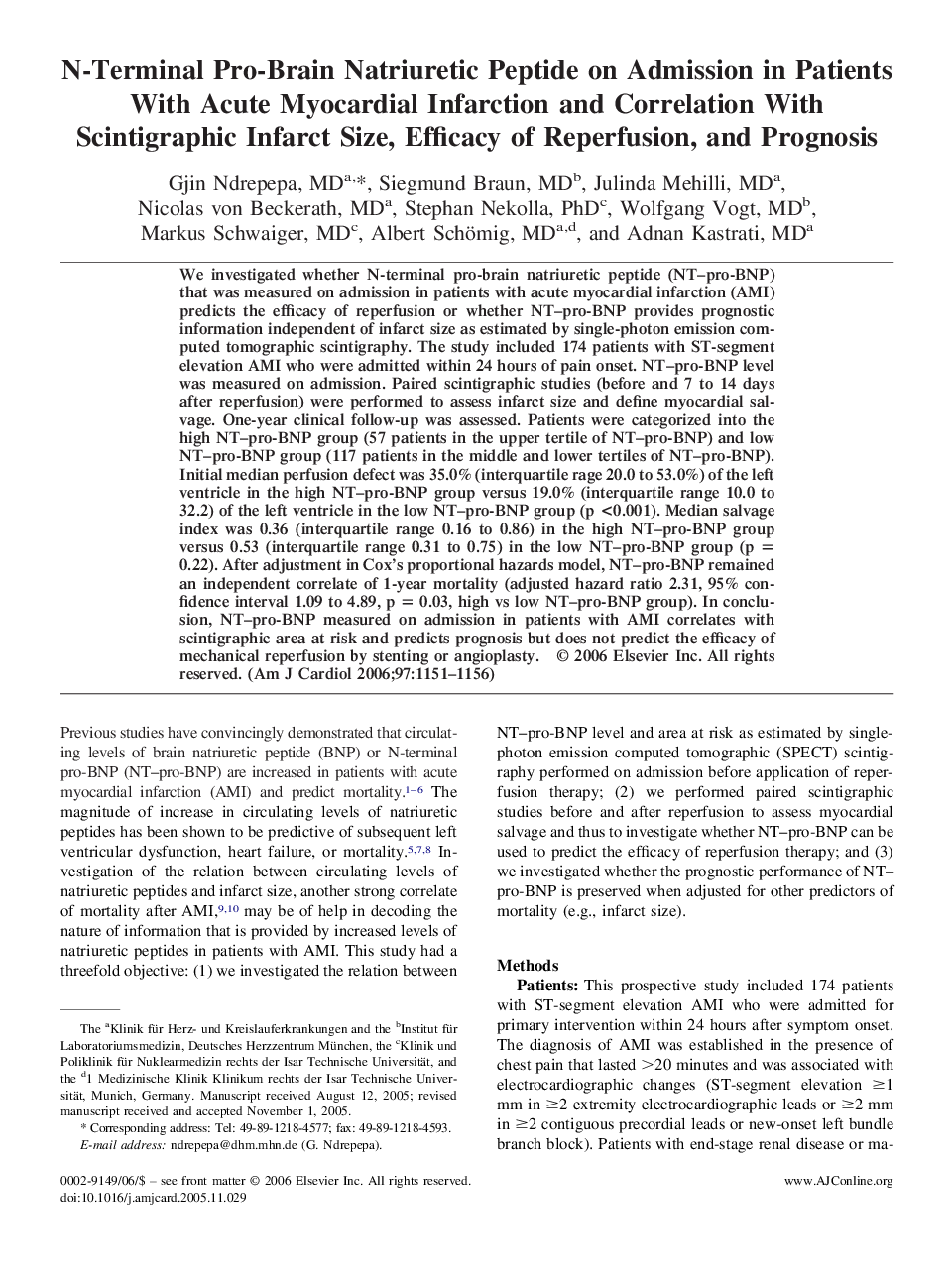| کد مقاله | کد نشریه | سال انتشار | مقاله انگلیسی | نسخه تمام متن |
|---|---|---|---|---|
| 2861465 | 1572416 | 2006 | 6 صفحه PDF | دانلود رایگان |

We investigated whether N-terminal pro-brain natriuretic peptide (NT–pro-BNP) that was measured on admission in patients with acute myocardial infarction (AMI) predicts the efficacy of reperfusion or whether NT–pro-BNP provides prognostic information independent of infarct size as estimated by single-photon emission computed tomographic scintigraphy. The study included 174 patients with ST-segment elevation AMI who were admitted within 24 hours of pain onset. NT–pro-BNP level was measured on admission. Paired scintigraphic studies (before and 7 to 14 days after reperfusion) were performed to assess infarct size and define myocardial salvage. One-year clinical follow-up was assessed. Patients were categorized into the high NT–pro-BNP group (57 patients in the upper tertile of NT–pro-BNP) and low NT–pro-BNP group (117 patients in the middle and lower tertiles of NT–pro-BNP). Initial median perfusion defect was 35.0% (interquartile rage 20.0 to 53.0%) of the left ventricle in the high NT–pro-BNP group versus 19.0% (interquartile range 10.0 to 32.2) of the left ventricle in the low NT–pro-BNP group (p <0.001). Median salvage index was 0.36 (interquartile range 0.16 to 0.86) in the high NT–pro-BNP group versus 0.53 (interquartile range 0.31 to 0.75) in the low NT–pro-BNP group (p = 0.22). After adjustment in Cox’s proportional hazards model, NT–pro-BNP remained an independent correlate of 1-year mortality (adjusted hazard ratio 2.31, 95% confidence interval 1.09 to 4.89, p = 0.03, high vs low NT–pro-BNP group). In conclusion, NT–pro-BNP measured on admission in patients with AMI correlates with scintigraphic area at risk and predicts prognosis but does not predict the efficacy of mechanical reperfusion by stenting or angioplasty.
Journal: The American Journal of Cardiology - Volume 97, Issue 8, 15 April 2006, Pages 1151–1156